 |
 |
 |
| |
Tolerability, adherence and completion of new occupational post-exposure prophylaxis regimen (tenofovir + emtricitabine and raltegravir)
|
| |
| |
Reported by Jules Levin
IDSA Oct 8-12 2014 Philadelphia, PA
Bock I1,2, Felsen U1,2, Catalano M1,2, Hacker S1, Zingman BS1,2
Montefiore Medical Center, Bronx, NY1; Albert Einstein College of Medicine, Bronx, NY2
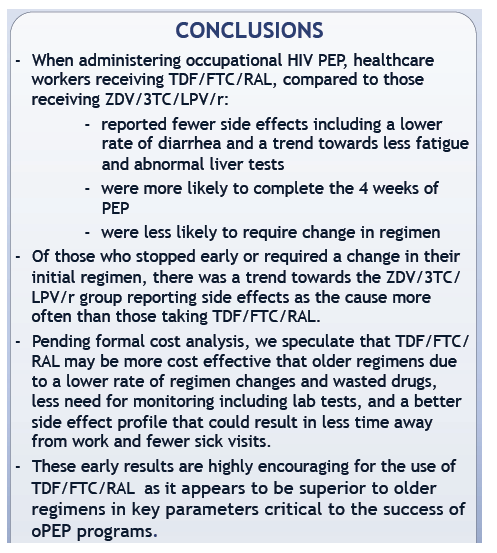
Program abstract:
Background: Several studies suggest that HIV acquisition can be reduced significantly with antiretroviral post-exposure prophylaxis (PEP). Recently the recommended occupational HIV PEP regimen was changed by CDC and New York State Department of Health to tenofovir + emtricitabine and raltegravir (TNF/FTC/RAL), principally to lessen side effects and simplify regimen choices. Studies of TNF/FTC/RAL in non-occupational PEP have shown the regimen to be well tolerated and better completed, but there are no studies to date in an occupational setting. The goal of this study is to compare the newly recommended occupational HIV PEP regimen to prior regimens in terms of tolerability, adherence, and completion rates in exposed healthcare workers.
Methods: In this retrospective case control study, we reviewed the charts of 160 employees at risk for HIV infection due to occupational exposure at Montefiore Medical Center in the Bronx NY from 2007-2013. We assessed risk of the exposure, initial PEP regimen, changes in regimen, rates of completion, costs, and side effects due to medications.
Results: Of the 160 employees, 153 had initial and follow-up information. Of these, 93 initially started on zidovudine + lamivudine and lopinavir/ritonavir (ZDV/3TC/LPV) were compared to 48 initially started on TNF/FTC/RAL. 40 of 93 (43%) of those in the ZDV/3TC/LPV group completed 4 weeks of therapy versus 31 of 48 (65%) of those in the TNF/FTC/RAL group (p=0.015). 68 of 93 (73%) of employees receiving ZDV/3TC/LPV reported side effects, compared to 27 of 48 (56%) of those receiving TNF/FTC/RAL (p=0.043). Further analyses will be presented at the meeting.
Conclusion: Employees receiving tenofovir + emtricitabine and raltegravir for occupational HIV post-exposure prophylaxis were more likely to complete the recommended 4 week course of therapy, and reported fewer side effects than those who received the prior recommended regimen of zidovudine + lamivudine and lopinavir/ritonavir. Tenofovir + emtricitabine and raltegravir appears to be superior to older regimens in key parameters critical to the success of occupational PEP programs.
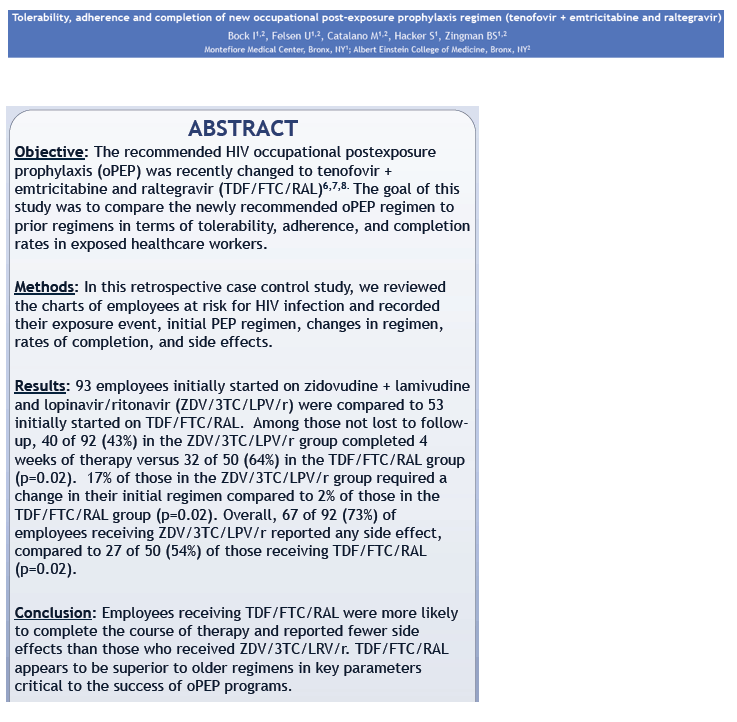
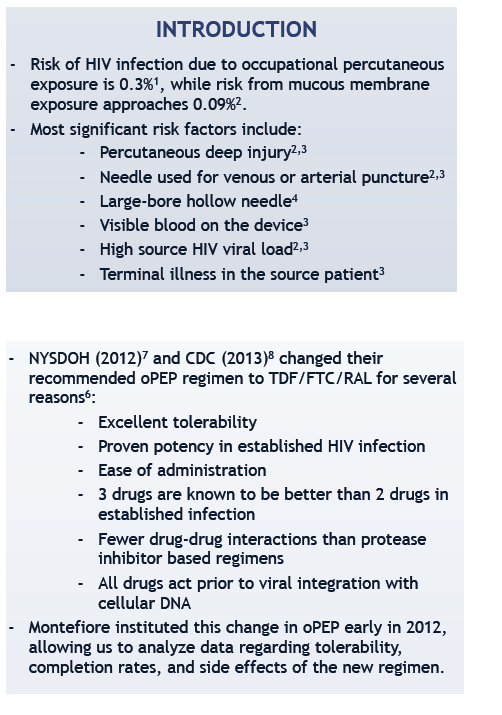
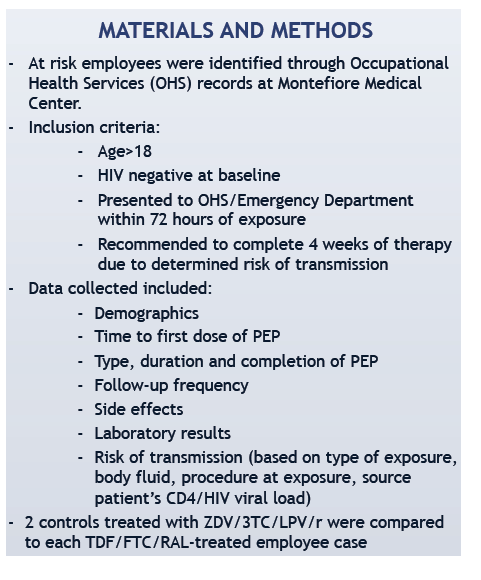
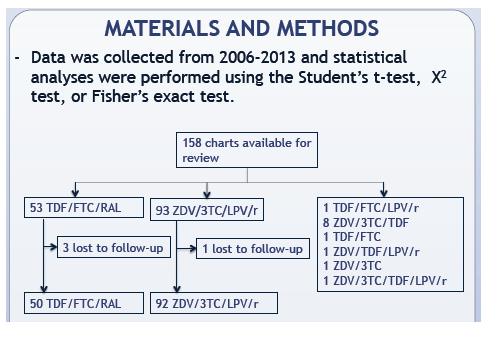
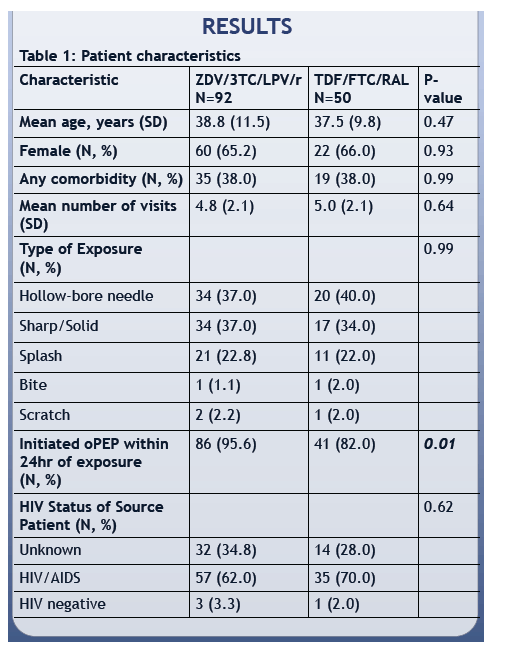
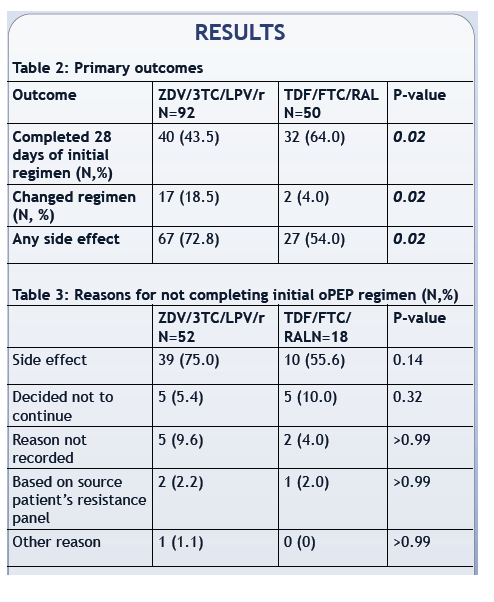
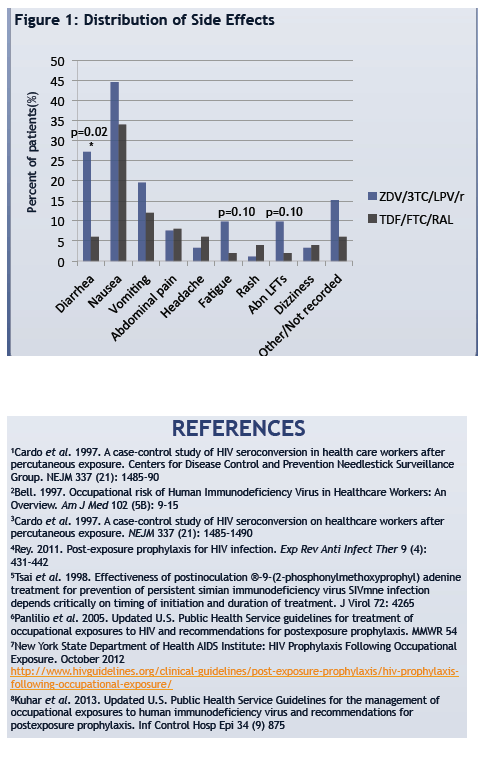
|
| |
|
 |
 |
|
|